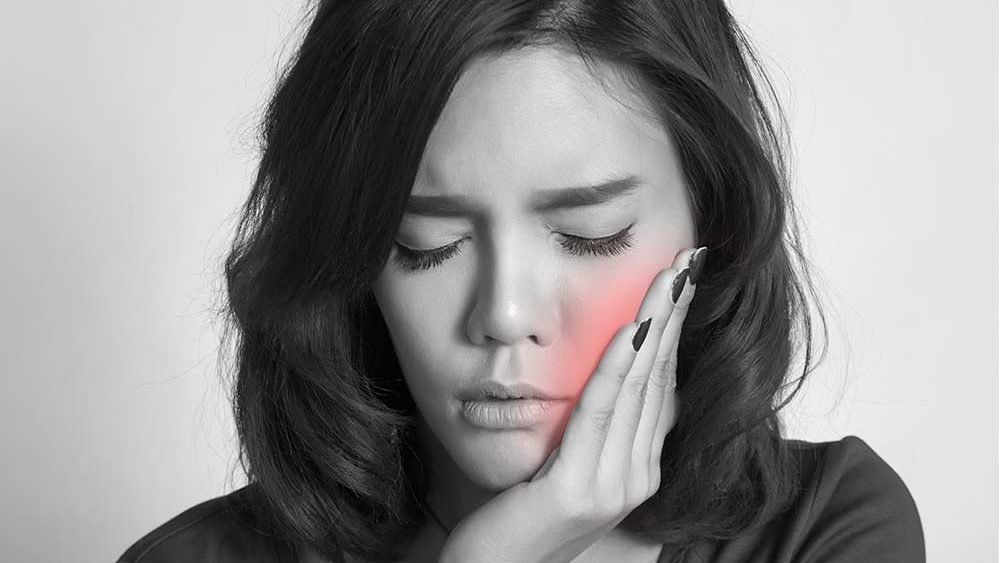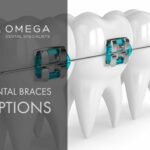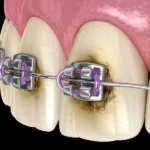Dental Emergencies in Houston

Use the information below as a guide to help you respond appropriately if you or someone near you experiences having a dental trauma.
Table of Contents
How To Manage Dental Pain?
Pain management is something dentists spend quite a bit of time and effort trying to alleviate or eliminate. Dental pain is amongst the most common orofacial pain complained about in the United States, and for a good reason—the face is filled with so many nerves and sensitive areas that even the slightest dental adjustments can make patients feel miserable. Many sufferers of dental pain are afraid to see a dentist because of dental visit anxiety and fear of facing more pain. Patients assume that dental care means hours of discomfort or outright misery and that the cure is often just as bad as the ailment. This doesn’t have to be the case since modern dentists and endodontists have created a very effective strategy for managing pain. With proper care and pain management, a trip to the dentist should result in considerable relief for your mouth rather than a torturous ordeal with a painful recovery.
What Is The 3D Strategy For Pain Management?
Many dentists and endodontist follow what is known as a 3D strategy for dental pain management: diagnose dental treatment, and drugs. Endodontists excel at knowing what the problem is, how to fix it, and which medications will control the pain. This strategy has been proven to be an extremely effective approach for alleviating or removing pain entirely. While tooth pain is very common and can have debilitating effects, it doesn’t have to affect your life.
1- Diagnose the Pain Condition
Diagnosing the pain condition is step one in the 3D approach to dental pain management. For any tooth pain to be effectively treated and managed, an endodontist must first discover the source of the pain. Finding the source of dental pain is not always easy and can take some time to figure out, depending on the case and the severity of the issue. One of the reasons identifying the core problem can be difficult has to do with referred pain, or pain you feel in an area that is not the cause of the problem. Where the patient may think the tooth pain is originating from may, in fact, be referred pain caused by a problem somewhere else. For instance, the source of a toothache felt on the bottom molar can sometimes be attributed to a problem in the top molar and vice versa (especially when a toothache is close to your ear).
For a dentist or endodontist to find the true source of the pain, the practitioner will go through a series of steps designed to recreate the dental pain the patient says they are suffering from. This may include having a patient test their bite or isolating the individual teeth with a rubber dam and then spraying a cold substance such as Endo-Ice on the tooth, for those complaining of sensitivity to cold substances. If the referred pain is still masking the underlying cause of pain, specialists will take x-rays to get a closer look at the problem. Issues such as cavities will show up after this process.
Again, the ease to which a toothache can be diagnosed varies case by case but is usually straight forward when the patient provides a clear and honest dental history. Sometimes it will take several visits to the dentist or endodontist for the source of the dental pain to be successfully and effectively treated. It is important that patients suffering from dental pain keep their dentist up-to-date on their recovery and inform them of any lingering pain there may be. In some instances, the inflammation and pain from a dental procedure may take some time to subside, but if it is a pain due to a problematic bite, the pain will not subside until the bite is adjusted. Those suffering from dental pain often don’t know the true source, which why it is important to keep a clear line of communication between the patient and practitioner.
2- Dental Treatment
Dental treatment is step two in the 3D approach to dental pain management. Once the dentist or endodontist knows the cause of the problem, he or she will formulate a plan addressing the issue. Successful dental treatment will greatly reduce the inflammatory process that is typically the latent cause of the dental pain. Most dental treatments will result in a vast improvement on the pain felt by the patient within the first week, and some patients may experience immediate relief depending on the treatment received. The key to successfully removing the source of pain and cause of inflammation is in providing the correct dental treatment, further emphasizing the importance of step one in the 3D approach to dental pain management. Some treatments may be done in one visit while others may take several. This is due to a variety of factors such as time and the treatment involved.
One of the most publicly known dental treatments for dental pain is the often-dreaded root canal, one of several weapons in the arsenal of endodontic treatment. Root canals are preventable through the practice of fastidious dental hygiene and routine visits to the dentist. It is important that patients understand what causes root canals, the types of foods and drinks that lead to tooth decay, and what good dental hygiene looks like. In short, root canals are necessary when the soft inside of a tooth, called the pulp, becomes inflamed or infected. This can be caused by decay due to cavities or from stress on the tooth which causes it to chip or crack. Once inflamed or infected, the pulp can ache to an unbearable degree and a root canal must be performed.
Many patients that are in need of a root canal have allowed their dental pain to go untreated due to anxiety and fear of visiting the dentist. It should be a relief for many to know that root canals are often painless and have desirable outcomes. Because of this, you should never wait until your dental pain reaches an unbearable point; the pain of a root canal will always be less than the pain of an inflamed, infected, and rotting tooth.
3- Drugs
The last step in the 3D approach of dental pain management is drugs. There are many things to be considered before drugs are prescribed, and clinicians take great care to obtain an accurate and clear medical history of their patient before writing a prescription. Drugs are a great and effective form of pain management and can be tailored to the patient and their needs. The most commonly used drugs for dental pain management are often over-the-counter pain relievers such as acetaminophen or ibuprofen. Studies have also shown that acetaminophen used in conjunction with ibuprofen provide significant and effective pain relief for the user. One of the most obvious benefits of the use of these two drugs is that when they are used over-the-counter, the risk of them becoming habit-forming is far less.
It is common for dentists and endodontists to pair two drugs together to achieve successful pain relief. Common combos are acetaminophen with codeine, acetaminophen with oxycodone, and acetaminophen with hydrocodone. Antibiotics are also often prescribed in the case of infection and do not typically provide the pain relief that the drugs mentioned above do. In many instances, antibiotics will be prescribed along with a pain reliever.
Local anesthetics are also commonly used in the treatment and prevention of dental pain during a dental procedure. The types of drugs used by the clinician will vary patient by patient. To prevent drug misuse, it is important that the clinician limit the amount of pain reliever prescribed, educate their patient, and monitor for any signs of substance abuse. The amount of pain felt by patients following a dental procedure is also greatly related to their dental hygiene and the effort they put into their post-procedure care. Those who continue to smoke or practice poor dental hygiene following a dental procedure experience far more pain than those who practiced good oral health habits. This is important to note to patients following a procedure, as the knowledge may prevent post procedural decisions that may exacerbate their pain and dental health. For any dental sensitivity following dental procedures, fluoride rinses may be prescribed and help aid in the pain/sensitivity relief of the patient.
What does it mean to have a dislodged tooth?
A dislodged (luxated) tooth is an injury in which a tooth has become partially displaced, either pushed further into, out of or sideways in its socket. If you experience this kind of tooth injury, see a dentist, or an endodontist, as quickly as possible to promptly stabilize your tooth.
- Typically, when a permanent tooth becomes dislodged, root canal treatment is required and is ideally begun within several days after the injury.
- Your dentist may place medication inside your tooth in preparation for root canal treatment. In that case, your healing process will be closely monitored in order to provide a timely medical response to the development of any adverse changes. Multiple dental visits are usually necessary to follow up on the progress of your recovery.
- Young children (7 to 12 years of age) may not require a root canal because their teeth are developing during this period. Research has found that stem cells in the pulps of children may be stimulated to affect root regrowth and to heal the pulp after injury (or infection).
- Your endodontist will discuss your treatment options for regeneration of tissues in the root of the tooth.
What should I do if I knock out a tooth?
Having a tooth knocked out is a common injury—more than five million every year, in total for adults and children). With appropriate emergency action, a tooth that has been knocked out can be resituated in its socket and can last as a healthy tooth for years to come.
If you experience having a tooth knocked out, your timely action can increase the probability that your tooth can be saved. Keeping the tooth wet, and seeking immediate attention from a nearby dentist or endodontist, ideally within 30 minutes from the time of injury are the critical steps toward saving your tooth.
What steps must be taken to save a knocked-out tooth?
1- Pick up your tooth by the white enamel part (the crown). Do not pick up the tooth the yellow part (the root).
2- Find the tooth as quickly as possible. Do not leave the tooth at the accident location. Handle the tooth with care. Avoid touching the root of the tooth, to prevent further injury to it.
3- If the tooth is contaminated, gently rinse it with clean water.
- Do not wrap your tooth in a cloth or tissue.
- Do not allow the tooth to dry.
- Do not scrub or rub the tooth to clean it.
- Do not use chemical cleaning agents or soap to clean the tooth.
4- Immediately place the tooth back into its socket, if possible.
The more quickly the tooth is placed back into its socket, the greater the probability that it can be restored. Reinsert the tooth by using your fingers to push it gently back into place. Or, position the tooth just above the socket and slowly close your mouth to press it into place. Keep the tooth in place by holding it there with your fingers, or by very gently biting down. (You may bite gently on a piece of clean cloth, if available.)
5- Keep the tooth wet.
Do not leave the tooth outside the mouth or allow it to start to dry. If you cannot place the tooth back into its socket, then take one of the following measures to preserve the tooth while you seek medical attention:
- Use an emergency kit for preserving a tooth ( Save-a-Tooth®, or another brand).
- Keep the tooth in your mouth (inside your cheek).
- Or, keep the tooth submerged in a saline solution or milk.
NOTE: Avoid using tap water for long-term storage of the tooth. Cells on the surface of the tooth’s root do not tolerate being exposed to water for extended periods of time.
6- Immediately after incurring the injury, make an emergency appointment to see a dentist (or an endodontist, if available). Ideally, see the dentist within 30 minutes. Take your tooth with you to your emergency dental appointment. Even if the tooth has been outside your mouth for more than an hour, it may be possible to save it.
What does it mean to have a cracked tooth?
There are numerous types of Cracked Tooth: Detection and Treatmentcracked teeth. The wide range of symptoms includes variable pain during chewing, sometimes when releasing bite pressure. Exposing the tooth to extremes of temperature can also cause pain. Many people with a cracked tooth experience intermittent pain, making it more difficult for dentists to determine which tooth is the source of the pain.
If you experience tooth pain, or if you think you may have a cracked tooth, see your dentist or an endodontist (specialist in treating cracked teeth) as soon as possible. Your treatment and its success in repairing your tooth rely upon on the type and extent of the crack, and its location.
If you suspect that your tooth may be cracked, see your dentist as quickly as possible, to prevent the problem from worsening. After treatment, the majority of cracked teeth return to normal functioning for years to come.
How will I know if I have a cracked tooth?
Cracked teeth manifest many different symptoms, including sporadic pain during chewing, sometimes during the release of bite pressure, or during exposure to extremes in temperature. Pain often varies from day to day, or even minute to minute. So, your dentist may have found it difficult to identify the tooth that is causing the pain.
Why is a cracked tooth painful?
Beneath the white enamel, inside the tooth is a hard layer known as the tooth’s dentin. Inside the dentin is an inner layer of soft tissue known as the pulp. The tooth’s pulp contains its blood vessels and nerves.
- When the tooth’s hard outer tissues become cracked, chewing or another mouth movement can cause the separated pieces of the cracked tooth to move. This movement irritates the pulp. The pulp may become increasingly damaged, finally to the extent that it is unable to heal itself.
- The tooth may hurt not only during chewing but also during exposure to extreme temperatures.
- Over time, the cracked tooth may start to hurt without any such adverse stimuli. More extensive tooth cracks can result in infection in the pulp and can spread into the bone and on into gum tissue around the tooth.
What treatment is done for a cracked tooth?
There are some different types of tooth cracks. Treatments and eventual outcomes for a cracked tooth depends on the type and location of the crack, and its extent.
Craze Lines:
Craze lines are very small, thin, shallow cracks in the enamel (the outermost layer of the tooth). Craze line teeth cracks are very common in adults. These cracks are painless and do not present risks to dental health. They’re only of potential aesthetic concern.
Cracked Tooth:
A tooth with a crack extending from the tooth’s enamel surface vertically (downward toward the root), is called a cracked tooth. The cracked tooth has not separated at this point, but may gradually continue spreading.
It is important to obtain an early diagnosis to maximize the potential for saving a cracked tooth. A root canal may be necessary if the cracking has reached the pulp. A protective crown may be placed over the tooth to prevent the crack from continuing to spread.
Early treatment is essential. Left untreated, the crack can worsen. If a tooth crack progresses to extend beneath the gum line, it can no longer be treated. The tooth must be extracted.
If you have a cracked tooth and find that drinking cold fluids or breathing through your mouth causes pain, you may have a cracked tooth. To help temporarily relieve pain, try biting on a moist, clean gauze, or a piece of cloth until you reach a dentist for an emergency appointment. Do not place aspirin on the painful area, or topical oral pain relief medications (like Anbesol®, or others), or ointments for tooth pain relief.
Fractured Cusp:
When a part of the tooth’s enamel surface breaks and falls off, the damage is technically known as a fractured cusp. These fractures infrequently damage the pulp. Typically, little pain results from this type of fracture. Such fractures are not uncommon around fillings. Consult with your dentist about having a new filling, or possibly a crown place over the fractured tooth to protect against additional damage.
Split Tooth:
Frequently, due to progress over time, a cracked tooth can split. Such splitting in the tooth is recognizable by a crack formed, with segments that are separable. A split tooth is not salvageable intact. However, depending upon the location and extent of cracking, some portion of the split tooth might be saved. In certain cases, part of the tooth may be saved through endodontic treatment.
Vertical Root Fractures:
Cracks that start at the tooth’s root and extend outward to the enamel surface are called vertical root fractures. Frequently, such cracks manifest only minimal symptoms and detectable signs of damage. So, these cracks can go without notice for some length of time. Vertical root fractures are often identified only after surrounding bone and/or gum tissue becomes infected.
Extraction of the fractured tooth may be necessary. However, if removing the fractured part of the tooth can save it, then endodontic surgery may be effective.
Following treatment, will my cracked tooth heal completely?
A cracked tooth does not heal in the same way a broken bone heals. Despite proper treatment, cracks can continue to grow and separate, sometimes resulting in tooth loss. Although placing a crown on a cracked tooth may provide the maximum possible protection of the tooth, it cannot guarantee that the tooth will not ultimately have to be removed.
- Proper treatment of the cracked tooth will relieve your pain and reduce the potential for the crack to become worse.
- After treatment of cracked teeth, the majority return to functioning through years beyond treatment. Consult with your endodontist regarding your diagnosis and recommendations for treatment.
After a cracked tooth has been treated, will the tooth heal completely?
The cracked tooth cannot heal entirely and may continue progressing and separating. Loss of the tooth may result. Placing a crown the cracked tooth can offer optimum protection. However, success in permanently saving the tooth cannot be guaranteed.
Receiving treatment for a cracked tooth relieves tooth pain, and it reduces the risk of the crack worsening. Following treatment, cracked teeth usually resume more normal functioning and can last for many years. Discuss your diagnosis and recommended treatments with your endodontist.
What preventive measures can I take to prevent teeth from cracking?
Although it is not possible to entirely prevent ever having a cracked tooth, there are steps you can take to help make your teeth less vulnerable to cracking.
- Do not chew on ice, ink pens, or other hard objects.
- Do not grind or clench your teeth.
- Always wear a protective face mask or mouth guard while playing contact sports.
- If you find that you are grinding or clenching your teeth during sleep, consult with your dentist about wearing a retainer or other form of protective mouth guard to prevent damage to your teeth while you sleep.
What will happen if my tooth becomes chipped?
The majority of dental injuries are chipped teeth. A chipped tooth can usually be repaired. Repairs typically involve either bonding a crown or tooth-colored filling into place in the affected area or reattaching the piece of tooth enamel that has been broken off. See your dentist for treatment as soon as possible after a tooth is injured, in order to prevent its condition from worsening.
What should be done if a fall affects a permanent tooth?
Consult a dentist immediately after the injury to the tooth occurs. This increases your likelihood of having your tooth restored to the greatest extent possible.
- Treatment will be promptly administered to conserve the tooth.
- The probability of conserving the vitality of the tooth is increased.
- The general prognosis for recovery of your tooth may be improved.
- Potential complications and costly future treatments may be prevented.
IMPORTANT: All traumatic dental injuries must be diagnosed and treated, and managed in a timely manner. (In some cases this may mean obtaining treatment within several years.)
What should I do if a permanent tooth is knocked out or broken?
- Find the missing tooth. Hold the tooth by the white enamel part (the crown). Do not hold the tooth by the yellow part (the root).
- Immediately place the tooth back into its socket, if possible.
- If the tooth becomes contaminated, rinse it briefly under cold tap water. Then, place the tooth back into its socket. A child can place his/her tooth back into its place, or an adult can do it for the child.
- Bite down gently on a clean piece of gauze, cloth napkin, handkerchief, etc., to hold the tooth in place while you urgently go to a dentist.
- If the tooth cannot be placed back into its socket, then immerse it in a cup of saline solution or milk. If neither milk nor saline is available, then place the tooth inside the victim’s mouth, between the gum and cheek.
- Immediately seek treatment by a specialist in dental injury.
- Maintain good oral hygiene throughout the period of healing.
Young children (7 to 10 years old) are more exposed to suffer avulsion (tissue separation) due to the degree of bone elasticity in this age group.





